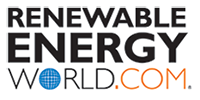 The energy storage market will expand dramatically in the coming years from an annual installation size of 6 GW in 2017 to more than 40 GW by 2021. In addition, an IMS Research report predicts that the market for storing energy from solar panels will go from $200 million in 2012 to nearly $19 billion by the end of this year. This is especially impactful for residential solar, which has seen consistent growth in the past few years and will continue to grow for the foreseeable future.
The energy storage market will expand dramatically in the coming years from an annual installation size of 6 GW in 2017 to more than 40 GW by 2021. In addition, an IMS Research report predicts that the market for storing energy from solar panels will go from $200 million in 2012 to nearly $19 billion by the end of this year. This is especially impactful for residential solar, which has seen consistent growth in the past few years and will continue to grow for the foreseeable future.
According to McKinsey, energy storage could be the “missing link” that makes intermittent renewables such as solar and wind power totally accessible and reliable all the time. That’s because it allows energy that’s stored while the sun is shining and the wind is blowing to be used later when the wind isn’t blowing or when it’s dark outside. McKinsey also indicates that there’s significant near-term potential for energy storage, and that this is largely due to the fact that prices are dropping dramatically and could be as low as $160 per kilowatt-hour by 2025.
Clearly, there is a mutually beneficial relationship between solar and energy storage. Particularly, long tail (i.e., small regional) solar companies will see greater opportunities as the industry moves away from consolidation and being dominated to a handful of large companies. This remains to be true despite the recent U.S. government policy shifts that deemphasize climate change. In fact, several companies as well as state and local governments have responded that this new policy won’t impede their efforts to support the development and implementation of clean energy including renewables.
New Opportunities for Long Tail Solar Companies with Energy Storage
Now, with solar financing options becoming simpler and more democratized, smaller and more agile solar providers will experience growth right along with the burgeoning energy storage industry. In fact, data show that residential energy storage will grow to 660 MW by 2021, and that most of it will be paired with solar. Solar paired with energy storage will drive growth in both industries.
This implies that partnerships need to be formed between solar and energy storage companies. That’s because long tail installers will need energy storage solutions to meet residential customer demand. However, one of the caveats is that not all energy storage solutions are the same because energy storage isn’t commoditized.
An example is the difference between a simple energy storage system versus an intelligent energy storage system. A simple system will allow customers to store energy from the grid or renewables and that’s pretty much it. For many people, this will be enough to satisfy their energy storage needs. An intelligent system will do this as well, but it will also facilitate energy optimization, home automation, and integration with the Internet of Things (IoT).

Recent Comments